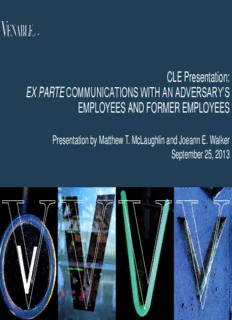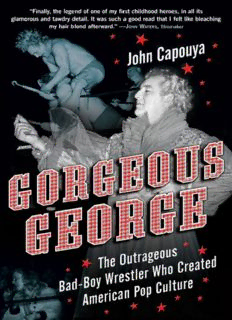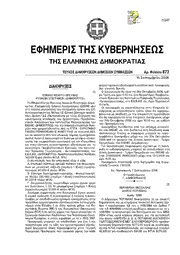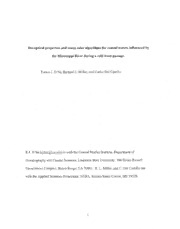
EX PARTE COMMUNICATIONS WITH AN ADVERSARY'S PDF
Preview EX PARTE COMMUNICATIONS WITH AN ADVERSARY'S
CLE Presentation: EX PARTE COMMUNICATIONS WITH AN ADVERSARY’S EMPLOYEES AND FORMER EMPLOYEES Presentation by Matthew T. McLaughlin and Joeann E. Walker September 25, 2013 © 2012 Venable LLP 1 This activity has been approved for Minimum Continuing Legal Education credit by the State Bar of New York in the amount of 1.0 credit hours, of which 1.0 credit hours can be applied toward the Ethics requirement. Venable certifies this activity conforms to the standards for approved education activities prescribed by the rules and regulations of the State Bar of New York, which govern minimum continuing legal education. Venable is a State Bar of New York approved MCLE provider. This program is appropriate for both experienced and newly admitted attorneys. © 2012 Venable LLP 2 Ex Parte Communications with Former Employees © 2012 Venable LLP 3 Setting the Stage Beyonce is on The Mrs. Carter Show World Tour in Orlando, Florida. She is preparing to sing All the Single Ladies. As she makes her entrance down some steps, she trips and falls. Beyonce believes that her heels caused the fall. She recalls the sensation of her left ankle collapsing just before tumbling. Though Beyonce completed the concert, she was later diagnosed with broken first and fifth metatarsal bones in her left foot. Major surgery followed and Beyonce lost significant business and performance opportunities. After speaking with Shawn Carter, Beyonce sues What’s On Your Feet? My Shoes, Inc. alleging WOYFMS’s heels were negligently manufactured. After filing suit, and without notice to WOYFMS, Beyonce’s counsel contacted WOYFMS’s retired Chief Shoe Designer, Jimmy Choo, and asked him questions about the design and manufacturing of the heels. Is such ex parte communication ethically permissible? http://www.youtube.com/watch?v=FSSGYwzix4U © 2012 Venable LLP 4 New York Professional Code of Conduct Rule 4.2 Communication With Person Represented By Counsel In representing a client, a lawyer shall not communicate or cause another to communicate about the subject of the representation with a party the lawyer knows to be represented by another lawyer in the matter, unless the lawyer has the prior consent of the other lawyer or is authorized to do so by law. The Twist: The Rule pivots on the word “party”. © 2012 Venable LLP 5 Is a former employee considered a “party” under the New York Professional Code of Conduct Rule 4.2? © 2012 Venable LLP 6 Niesig v. Team, 559 N.Y.S.2d 493 (1990) Facts: Plaintiff was injured in a scaffolding collapse at a construction site. His counsel sought court permission to informally conduct ex parte interviews of all the defendant’s employees who had witnessed the accident. Some employees were former employees by the time of plaintiff’s application for the ex parte interviews. Appellate Division: Ethical Rule 4.2 banned contact with all present employees. Court of Appeals: Agreed with Appellate Division holding that former employees could be contacted, and established a broad three-prong rule governing when present employees are considered parties under Rule 4.2 and may be contacted. © 2012 Venable LLP 7 Niesig Test The test that properly balances the competing interests defines the word “party” under the no-contact rule to include the following three categories of employees: Corporate employees whose acts or omissions in the matter under 1. inquiry are binding on the corporation (i.e., the corporation’s alter egos: managers, directors, officers) Corporate employees whose acts or omissions in the matter under 2. inquiry are … imputed to the corporation for purposes of liability Employees implementing the advice of counsel 3. Opposing counsel cannot contact people within these three categories. All employees not in these categories may be interviewed informally and without notice to counsel. © 2012 Venable LLP 8 Muriel Siebert & Co., Inc. v. Intuit, Inc., 836 N.Y.S.2d 527 (2007) Plaintiff sued defendant for failing to promote an internet brokerage contract. Plaintiff’s COO, Nicholas Dermigny, was heavily involved in the events leading to the lawsuit and was part of plaintiff’s “litigation team” when the lawsuit began. During the litigation, Dermigny was terminated and he refused to be represented by plaintiff ’s counsel when defendant sought to take his deposition. Before Dermigny’s scheduled deposition, defendant’s counsel contacted him without plaintiff’s knowledge and arranged for an interview. Before beginning the interview, defense counsel advised Dermigny that he should not disclose any privileged or confidential information, including any conversations with plaintiff’s counsel or information concerning plaintiff’s legal strategy. The interview proceeded and Dermigny did not disclose any privileged information. Learning of the interview, plaintiff ’s counsel moved to disqualify defense counsel, enjoin it from using any information provided by Dermigny during the interview, and stay the upcoming deposition. © 2012 Venable LLP 9 Siebert Holding Reviewing the changes brought by Niesig, the Court of Appeals noted that the Niesig decision attempted to strike a balance between protecting represented parties from making improper disclosures and allowing opposing counsel to learn relevant facts through informal devices like ex parte interviews. Niesig stands strong after nearly two decades. The Court held that there was no basis for the disqualification because Dermigny no longer had authority to bind the company in litigation, was no longer charged with carrying out the advice of counsel, and did not have a stake in representation. In addition, the court noted that the defendant’s counsel properly advised Dermigny of its representation and interest in the litigation, and directed Dermigny not to disclose privileged or confidential information. © 2012 Venable LLP 10
Description:The list of books you might like

A Thousand Boy Kisses

Atomic Habits James Clear

Believe Me

Corrupt (Devil's Night #1)

sraffa's mathematical economics – a constructive interpretation

ZEN y ARTES MARCIALES

The PISA Effect on Global Educational Governance

This Man Confessed

Bulletin des Actes administratifs n°18

böbrek nakli alıcı adayı değerlendirmesi

Gorgeous George: The Outrageous Bad-Boy Wrestler Who Created American Pop Culture

Greek Government Gazette: Part 7, 2006 no. 673

On the Re-erection of the Tribe Stenoscelideini SCHAEFER (Heteroptera, Coreidae, Coreinae)

Zur Synonymie westpaläarktischer Miriden (Heteroptera)

Gonycentrum heissi nov.sp. (Hemiptera, Heteroptera, Tingidae) from Madagascar

Heissocteus ernsti nov.gen. et nov.sp. (Heteroptera, Cydnidae) from Zambia

C4MIP

C(2000) 363 final

Ти-ти-та и ди-ли-дон. Игровая теория музыки для детей 4-6 лет

Cabrai Filho que H 0 governador Marcello Alen- nes1 u ontem cjuc ist^j'i d* tr a Pi c

Arisaema inaense and A. nagiense, Two Diploid Species of the A. ovale Group (Araceae)



